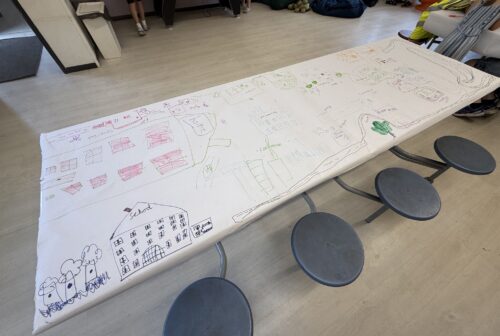What can children teach us about placemaking?

My kids recently came home from their holiday clubs telling me that they’d made posters declaring “Save the Trees!” The reason? They’d been told that a developer across the road was “killing birds and knocking down trees”, so their afternoon activity had been to create opposition posters.
Living in the centre of a large city, we’re quite used to developments happening around us as a family. The development across the road was granted approval on delegated authority last year and the developer involved has a fantastic reputation. But this got me thinking – what if the shoe was on the other foot?
If that same developer had visited the holiday club to educate children about the housing crisis, explain what their development actually entailed and asked them to make posters supporting more homes – I think we’d have heard a very different story.
So, I offered to visit the holiday club myself. My plan wasn’t to champion any specific development, but simply to talk about why we need more houses. I arrived armed with pens, paper and some borrowed PPE from the development across the road.
I asked the children to design a place where people could be happy and healthy – to become builders of their own cities. What struck me was how instinctively they started with homes, but then quickly added schools, shops, hospitals, parks, cinemas, roads and trees. Many hadn’t realised that builders and developers create all of these things – not just houses, but the spaces and connections that make communities thrive.
This really got me thinking about how we frame development to the public and how that narrative gets passed down to younger generations. For many people, ‘development’ just means housebuilding, rather than shaping whole places. I wonder if the public conversation around housing would be different if we looked at developments holistically: as the place where you go to school; the park where you play with friends; the place where you learned to swim.
The kids were proud to wear those hi-vis vests and hard hats. And as they head back to school this month, walking through communities built by developers past and present, maybe it’s time we all started seeing development through their eyes. Not as a problem to solve, but as an opportunity to build healthier, happier places where the next generation will learn, play and grow.
